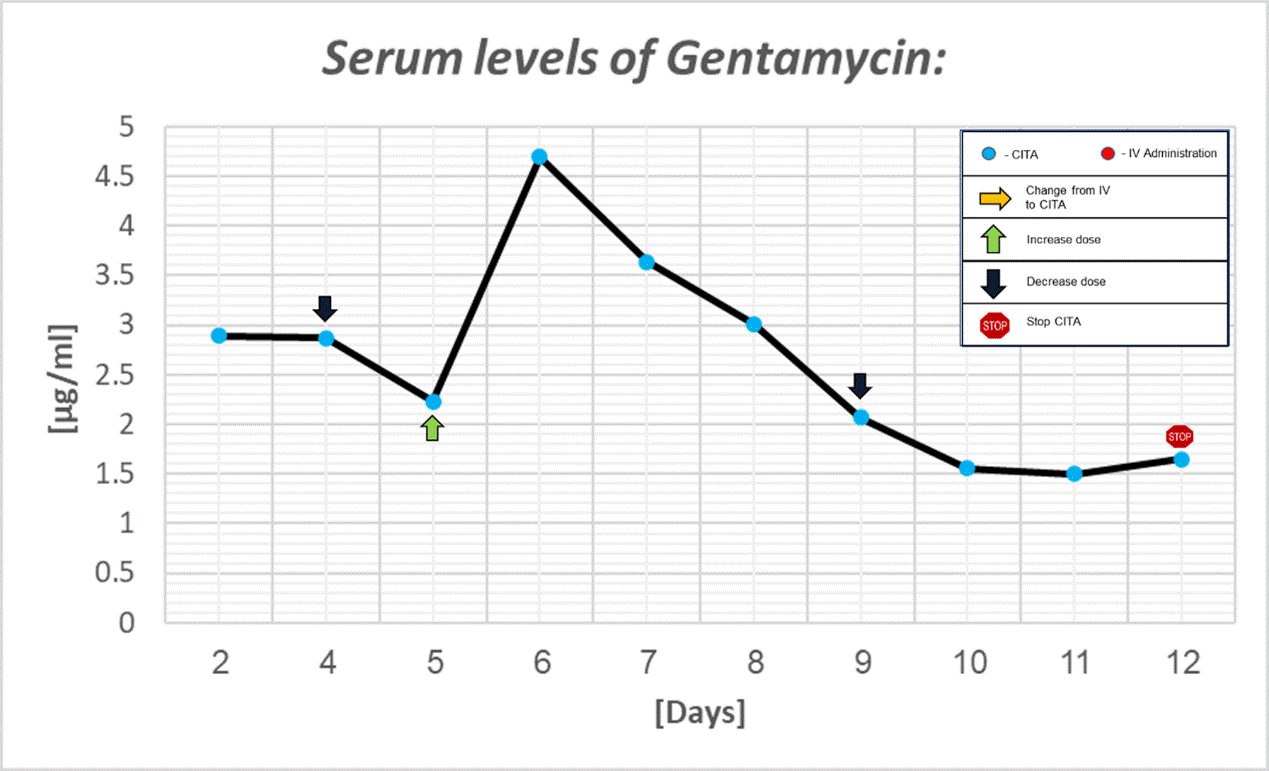
Suggested Management of Left Ventricular Assist Device Driveline Infection
2Department of Cardiac Surgery, Tel Aviv Sourasky Medical Center, Israel
3Department of Infectious Disease, Tel Aviv Sourasky Medical Center, Israel
Introduction: Left ventricular assist device (LVAD) driveline infection (LVAD-DI) is a common and deleterious complication of LVADs and was associated with LVAD thrombosis and systemic emboli. Though topical and systemic antibiotics are often used, repeated episodes of infection are anticipated due to direct contact with the skin. Chronic suppressive antimicrobial treatment is commonly applied for intractable infection. This therapy, however, delivers minimal inhibitory concentration (MIC), frequently ineffective for treating infected cardiovascular-implantable electronic devices (CIEDs).
Localized continuous in-situ-targeted, ultra-high concentration of antibiotics (CITA) therapy allows maintaining antibiotic levels of 102-103 MIC at the infection site not achievable by intravenous systemic administration.
Aim: To evaluate the efficacy and safety of CITA therapy for localized infection applied for LVAD-DI.
Methods: Two consecutive LVAD-DIs were treated by CITA administered in close vicinity to the driveline for 14 days. Both patients were implanted >6 months before the infection and had a local infection with partially resistant pseudomonas spp. Blood cultures were negative, and they were free from systemic signs of infection. Both patients underwent insertion of irrigation catheter parallel to the driveline for CITA administration directly into the infected site,
Results: Assays of serum gentamicin level, obtained during treatment by CITA therapy, were detected within an effective trough range that could be manipulated to the desired level by change of drug concentration, corresponding to 102-103 MIC local levels (Figure 1). Local infection resolution was observed by the end of the therapeutic period.
Conclusion: DI treatment by the CITA approach resulted in localized infection clearance while maintaining adjustable, safe systemic therapeutic levels. CITA may provide an effective and safe, conservative alternative approach to initial IV antibiotic administration for patients with LVAD-DIs.
Figure 1.

Powered by Eventact EMS